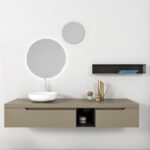The COVID-19 pandemic has caused widespread disruption to our daily lives, forcing us to adapt to a new normal that includes social distancing, remote work, and uncertainty about the future. While these changes have been necessary to slow the spread of the virus, they have also taken a toll on our mental health and wellbeing. According to the Centers for Disease Control and Prevention (CDC), symptoms of anxiety and depression have increased significantly since the pandemic began. In this article, we will explore the challenges of maintaining mental health during the pandemic and provide strategies for coping and seeking support.
Mental Health Challenges during the Pandemic
One of the biggest challenges of the pandemic has been the social isolation that many of us have experienced. With social distancing measures in place, we have had limited opportunities to connect with others, which can lead to feelings of loneliness, anxiety, and depression. Additionally, the pandemic has created a sense of uncertainty about the future, which can be stressful and overwhelming.
Another challenge has been the transition to remote work or online learning. While these options have allowed us to continue working or studying from home, they can also blur the boundaries between work and personal life, leading to burnout and fatigue.
Coping Strategies for Maintaining Mental Health
Despite these challenges, there are strategies that can help us maintain our mental health during the pandemic. One of the most important is to practice self-care. This can include getting enough sleep, eating a healthy diet, and engaging in physical activity. Mindfulness practices such as meditation and deep breathing can also help reduce stress and anxiety.
It’s also important to stay connected with others, even if we can’t meet in person. This can include virtual social gatherings, phone calls, and messaging. Making time for hobbies or activities that bring us joy can also help us cope with stress and improve our overall wellbeing.

Seeking Professional Help
While self-care and social support can be helpful, sometimes we may need more intensive support to manage our mental health. This is where seeking professional help can be beneficial. Mental health professionals such as therapists or counselors can provide individualized support and guidance for managing mental health challenges. It’s important to note that seeking professional help is not a sign of weakness, but rather a proactive step towards improving our mental wellbeing.
Resources for Mental Health Support
There are a variety of resources available for those seeking mental health support during the pandemic. Online therapy or counseling services can provide a convenient and accessible option for those who may not be able to meet in person. Many mental health organizations also offer free or low-cost support options, including crisis hotlines and support groups. It’s important to research and identifies resources that are appropriate for our specific needs and preferences.
Conclusion
The COVID-19 pandemic has presented many challenges for maintaining mental health and wellbeing. However, by practicing self-care, staying connected with others, and seeking professional help when needed, we can better manage these challenges and improve our mental wellbeing. It’s important to prioritize our mental health during these uncertain times and take proactive steps toward self-care and support.








